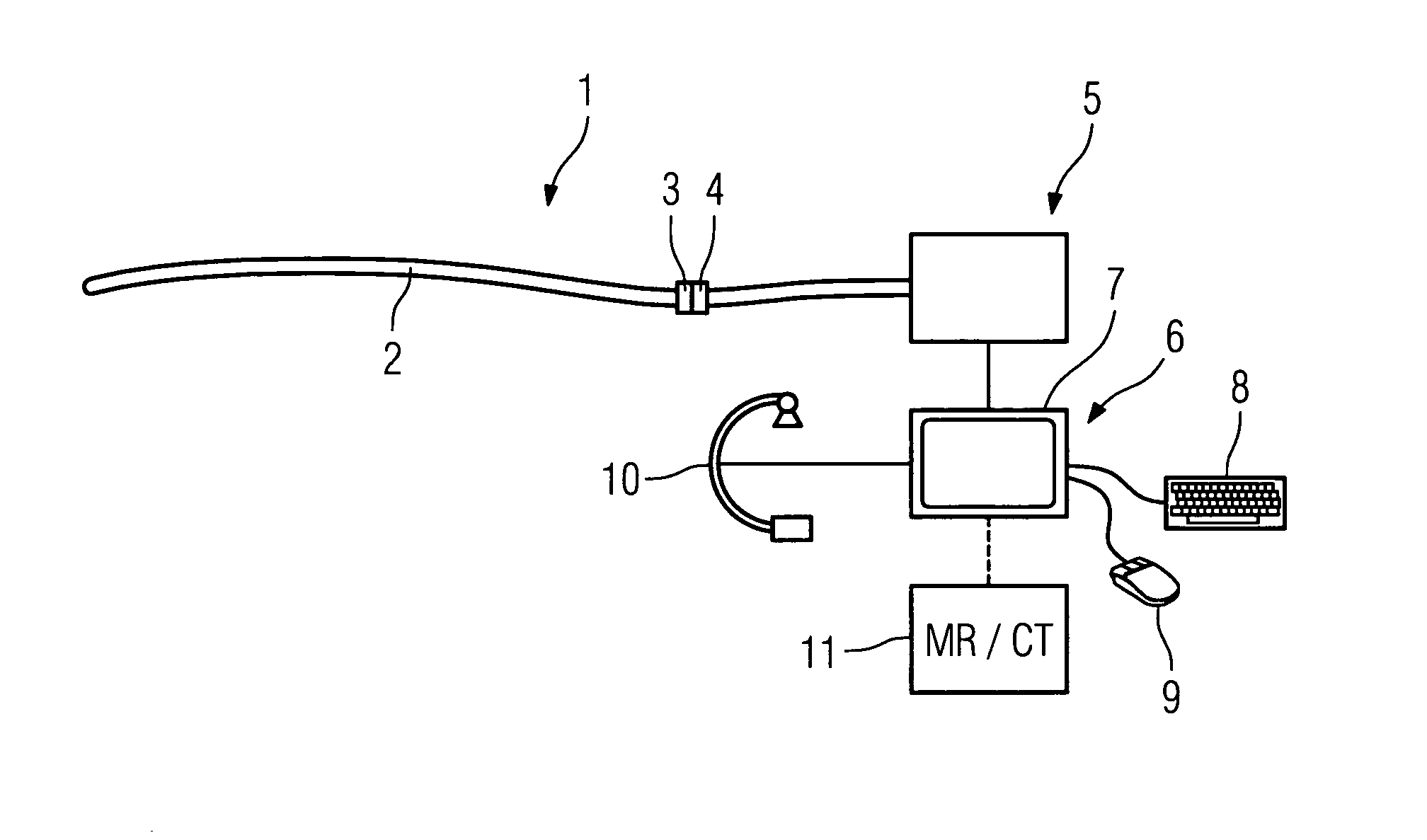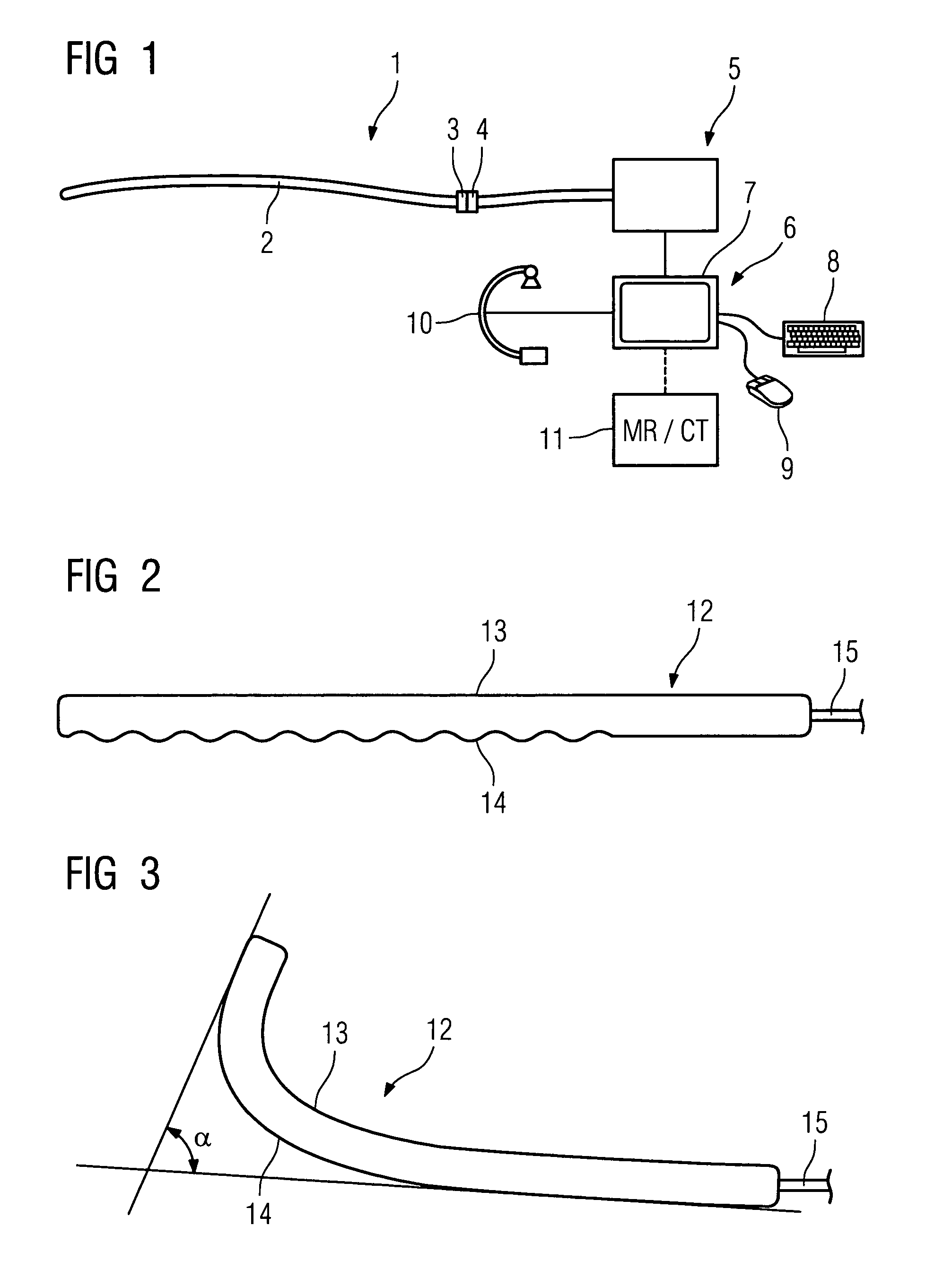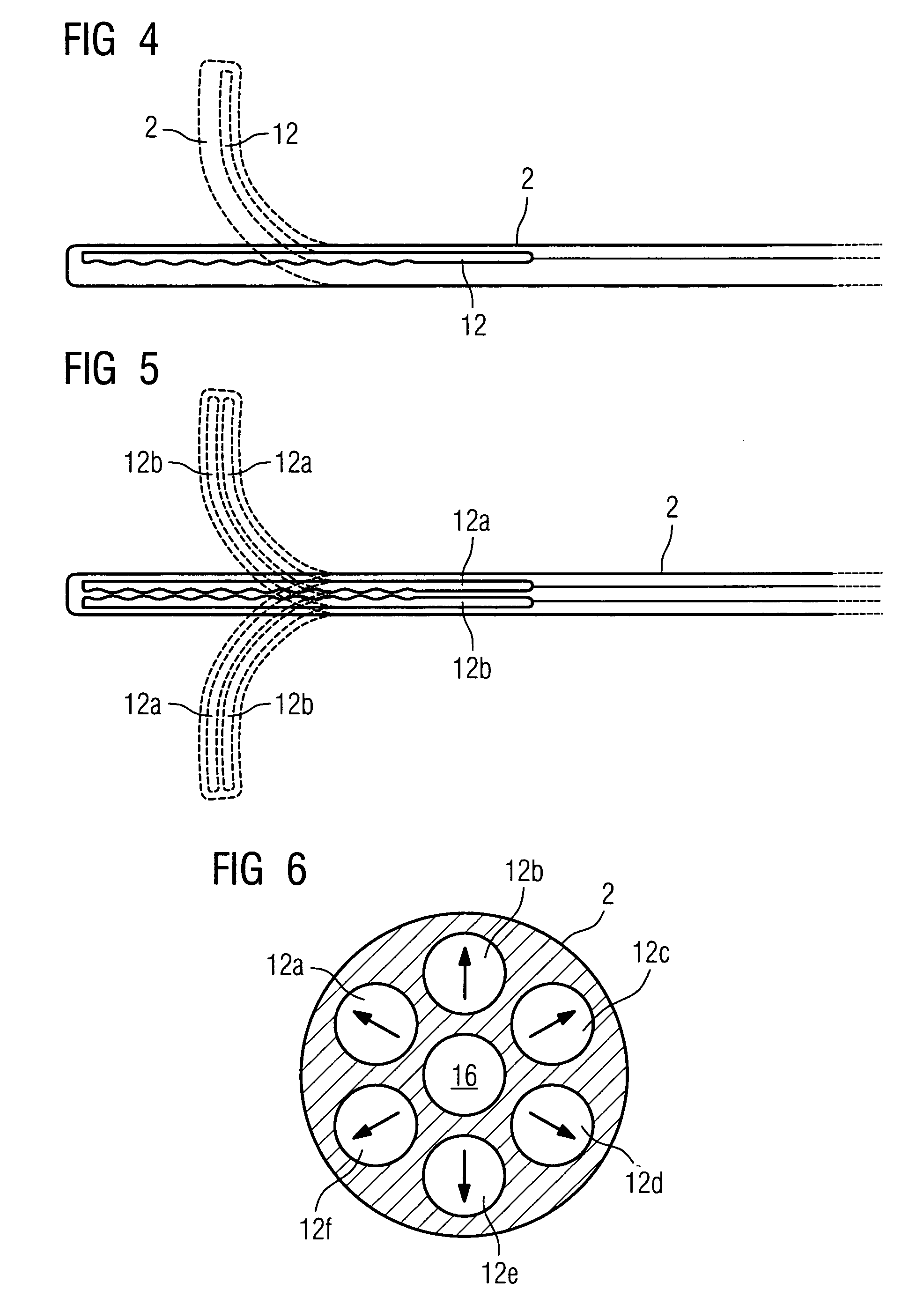Catheter
a catheter and catheter technology, applied in the field of catheters, can solve the problems of limited curvature angle, complicated catheter structure, limited size of the area that can be navigated, etc., and achieve the effects of simple and fast setup, easy navigation, and minimal risk of injury
- Summary
- Abstract
- Description
- Claims
- Application Information
AI Technical Summary
Benefits of technology
Problems solved by technology
Method used
Image
Examples
Embodiment Construction
[0028]FIG. 1 shows a catheter device 1 according to the invention comprising a catheter 2, at the free end of which (i.e. the end that is not to be inserted into the patient) there is provided a connection device 3 which is coupled to a connection device 4 that forms part of a feed device 5 for a liquid or gaseous filling medium. By means of said feed device 5, a liquid or gaseous filling medium can be supplied to the individual flexural elements which are integrated into the catheter and which are hereinafter described in further detail. The feed device 5 is coupled to an input device 6 comprising a monitor 7, a keyboard 8 and a mouse 9. By means of said device, the operator, referring to an image displayed on the monitor 7, said image being supplied for example by an X-ray image taken in parallel by an X-ray device 10 during the invasive procedure, or where appropriate using an image data set 11, obtained for example by magnetic resonance tomography or computer tomography, can spe...
PUM
 Login to View More
Login to View More Abstract
Description
Claims
Application Information
 Login to View More
Login to View More - R&D
- Intellectual Property
- Life Sciences
- Materials
- Tech Scout
- Unparalleled Data Quality
- Higher Quality Content
- 60% Fewer Hallucinations
Browse by: Latest US Patents, China's latest patents, Technical Efficacy Thesaurus, Application Domain, Technology Topic, Popular Technical Reports.
© 2025 PatSnap. All rights reserved.Legal|Privacy policy|Modern Slavery Act Transparency Statement|Sitemap|About US| Contact US: help@patsnap.com



